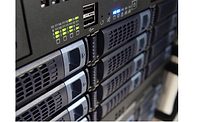Fortifying the software supply chain: A crucial security practice

Image via Unsplash
The software supply chain (SSC) serves as the backbone of software development, encompassing every stage from code creation to deployment infrastructure. However, the very interconnectedness that makes the SSC efficient also renders it vulnerable to escalating cyber threats.
The urgency of software supply chain security
Software supply chain security (SSCS) is paramount in safeguarding the integrity and security of software throughout its lifecycle. The gravity of reinforcing SSCS is underscored by the “State of Software Security 2023” report from Veracode, revealing that over 80% of applications contain at least one security vulnerability. Moreover, ReversingLabs reports a staggering 1300% increase in cybersecurity threats via open-source repositories from 2020 to 2023, signaling the heightened sophistication and frequency of attacks targeting the SSC.
Navigating the evolving landscape of SSCS
The proliferation of high-profile SSC attacks, such as breaches compromising widely used libraries, emphasizes the potential for significant downstream impacts across dependent applications. This cascade effect underscores the evolving and expanding attack surfaces within the supply chain, particularly with the proliferation of open-source components.
Strategies for a resilient software foundation
Addressing these challenges necessitates proactive measures. Adopting the National Institute of Standards and Technology’s (NIST) Secure Software Development Framework (SSDF) guidelines is crucial, as they help mitigate risks across the software development lifecycle (SDLC). Additionally, implementing a Software Bill of Materials (SBOM) is indispensable. An SBOM provides a comprehensive inventory of all software components, enhancing transparency and aiding in the swift identification and remediation of vulnerabilities. Coupled with best practices for managing open-source dependencies recommended by the Open Source Security Foundation (OpenSSF), organizations can significantly bolster their SSC defenses.
The complexity of AI/ML in SSCS
The integration of Artificial Intelligence (AI) and Machine Learning (ML) into the software supply chain introduces additional complexities. The potential for data poisoning in AI/ML training datasets and the opaque nature of some AI models present unique security challenges that must be navigated carefully.
Comprehensive approaches to mitigating SSC risks
A robust SSC security strategy involves multiple layers of protection:
- Code signing: Utilizing digital signatures ensures the authenticity and integrity of software by verifying that the code remains unaltered from development to deployment. Employing hardware security modules (HSMs) for key management enhances the security of code signing practices.
- Application encryption: Encrypting sensitive data both at rest and in transit is fundamental. Application encryption secures code across various platforms, safeguarding against unauthorized access during SSC breaches.
- Cryptographic key management: Effective encryption depends on secure cryptographic key management, ensuring that only authorized personnel can access sensitive elements like the SBOM.
Expanding the discussion: Extending the dialogue on SSCS
While the outlined strategies provide a solid foundation for bolstering SSC security, it's essential to delve deeper into each aspect and explore additional avenues for enhancement. For instance, organizations can leverage threat intelligence platforms to proactively identify and mitigate potential vulnerabilities in open-source components before they are integrated into the SSC. Moreover, continuous monitoring and auditing of the SSC can provide real-time insights into emerging threats and vulnerabilities, enabling timely remediation actions.
Additionally, collaboration among stakeholders within the software supply chain ecosystem, including developers, vendors and end-users, is vital for fostering a collective defense posture against evolving cyber threats. By sharing threat intelligence, best practices and lessons learned, stakeholders can collectively strengthen the resilience of the SSC and mitigate the risk of supply chain attacks.
Furthermore, as the adoption of DevOps and agile methodologies continues to gain traction, organizations must integrate security seamlessly into their development workflows. This entails embedding security controls and best practices throughout the SDLC, from initial code development to deployment and beyond. Embracing automation and orchestration technologies can streamline security processes and ensure consistency and accuracy in security implementations across the SSC.
Embracing a comprehensive approach to SSC security
As organizations navigate the evolving threat landscape and strive to fortify their software supply chains, it's clear that a proactive and multi-layered approach to SSC security is essential. By adopting industry best practices, leveraging advanced technologies and fostering collaboration across the supply chain ecosystem, organizations can strengthen their defenses against cyber threats and mitigate the risk of supply chain attacks.
When software underpins virtually every aspect of modern society, securing the software supply chain is not just a best practice; it’s a strategic imperative. By prioritizing SSC security and investing in robust security measures, organizations can protect their critical assets, maintain customer trust, and safeguard against the potentially devastating consequences of supply chain breaches.
Looking for a reprint of this article?
From high-res PDFs to custom plaques, order your copy today!






